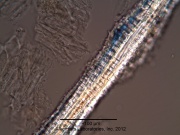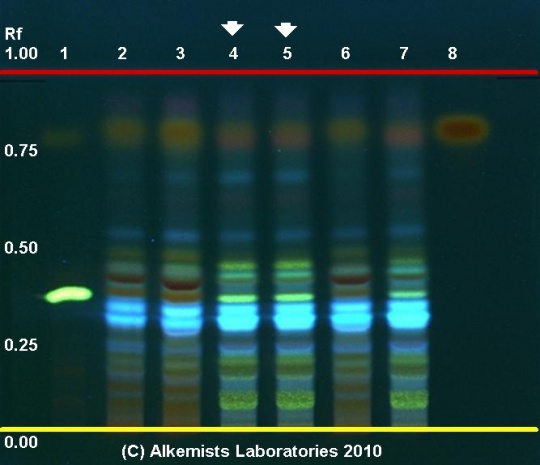Frangula purshiana (bark)
Contents |
Introduction
Introduction from Wikipedia, the free encyclopedia (http://en.wikipedia.org/wiki/Rhamnus_purshiana, retrieved 02/27/2012).
Rhamnus purshiana (Cascara Buckthorn, Cascara, Bearberry, and in the Chinook Jargon, Chittam or Chitticum; syn. Frangula purshiana, Rhamnus purshianus) is a species of buckthorn native to western North America from southern British Columbia south to central California, and inland to western Montana.
It is the largest species of buckthorn, occasionally growing up to 15 m tall, though more commonly a large shrub or small tree 5–10 m tall, with a trunk 20–50 cm in diameter. The bark is brownish to silver-grey with light splotching. The leaves are deciduous, alternate, clustered near the ends of twigs; they are oval, 5–15 cm long and 2–5 cm broad with a 0.6–2 cm petiole, dark shiny green on top, fuzzy and paler green below. The flowers are tiny, 4–5 mm diameter, with five greenish yellow petals; the flowering season is brief, disappearing by early summer. The fruit is a berry 6–10 mm diameter, bright red at first, quickly maturing deep purple or black, and containing three seeds.
It grows in moist, acidic soils in the shady side of clearings or in the marginal forest understory, near the edges of mixed deciduous-coniferous forests. It typically grows as a second-generation tree after alders have colonized a barren plot of land.
The quoted text in this section was licensed for use under the Creative Commons ShareAlike License, version 3.0: http://creativecommons.org/licenses/by-sa/3.0/
Macroscopic Entries
Microscopic Entries
|
HPTLC Entries
|
Cascara (bark) (Rhamnus purshiana) Lane Assignments Lanes, from left to right (Track, Volume, Sample):
Reference materials used here have been authenticated by macroscopic, microscopic &/or TLC studies according to the reference source cited below held at Alkemists Pharmaceuticals, Costa Mesa, CA. Stationary Phase Silica gel 60, F254, 10 x 10 cm HPTLC plates Mobile Phase ethyl acetate: methanol: water [10/1.35/1] Sample Preparation Method 0.3 g + 3 ml CH3OH sonicate/heat @ 50° C ~ 1/2 hr Detection Method Natural Product Reagent + PEG -> UV 365 nm Reference see Plant Drug Analysis, Wagner, H., 1996
|
Other Points of Interest
Cite error: <ref> tags exist, but no <references/> tag was found


